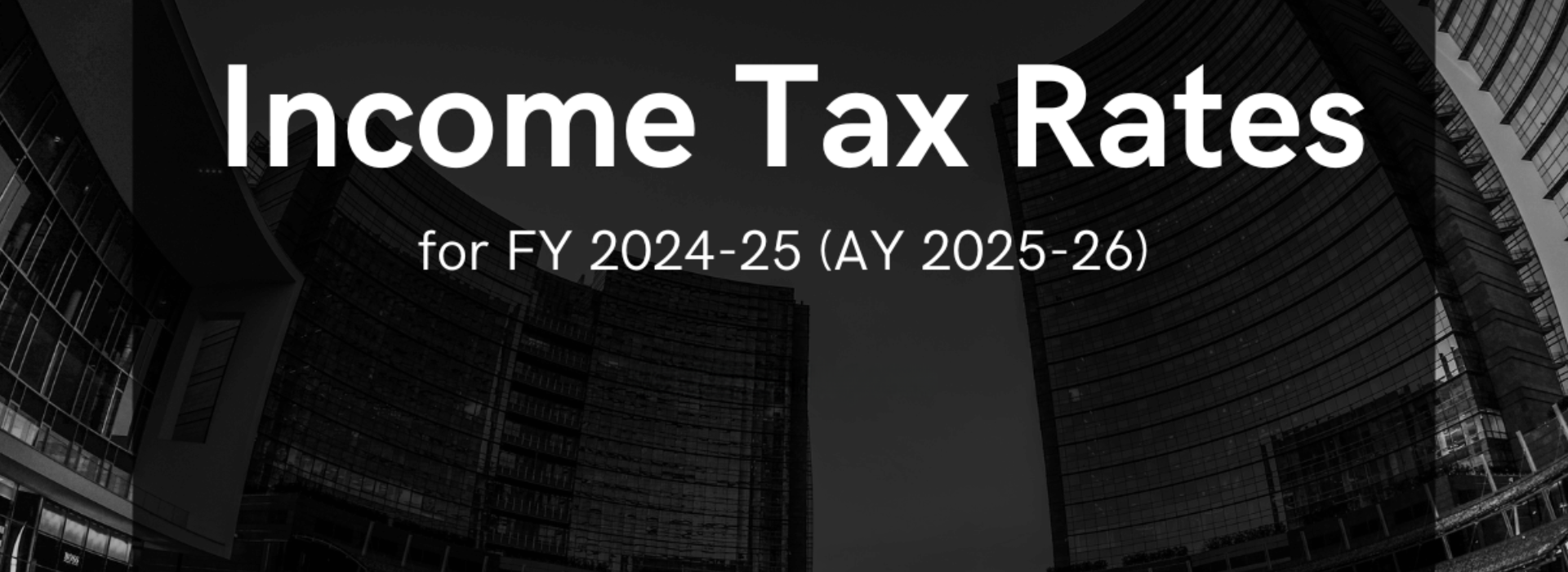
Applicable Income Tax Slab Rates for Financial Year 2024-25 (Assessment Year 2025-26)
As the new financial year unfolds, it’s important for every working professional, entrepreneur, and taxpayer to stay updated with the latest Income Tax Slab Rates. Whether you file under the Old Tax Regime or the New Tax Regime, understanding these slabs helps in efficient financial planning and smart tax-saving decisions.
In this blog, Capital Varsity brings you a detailed breakdown of the applicable income tax slabs for FY 2024–25 (AY 2025–26) along with key tips to manage your tax filings better. This detailed guide will help you navigate your tax obligations and understand how changes in income, investments, and regime selection can impact your liability.
What is a Financial Year vs. Assessment Year?
Many taxpayers confuse the terms financial year and assessment year. Here’s a quick explanation:
- Financial Year (FY 2024–25): The year in which income is earned. For this year, it starts on April 1, 2024, and ends on March 31, 2025.
- Assessment Year (AY 2025–26): The year in which the income of the financial year is assessed and taxes are filed. This begins from April 1, 2025 onwards.
Taxpayers must file their income tax return (ITR) for income earned in FY 2024–25 during AY 2025–26.
Income Tax Slabs – New Tax Regime (Default Option)
The New Tax Regime was introduced to simplify tax filing and offer lower slab rates. However, this regime does not allow for common deductions like Section 80C, HRA, or LTA. It is now the default regime unless a taxpayer chooses otherwise.
Income Tax Slab Rates (For Individuals Below 60 Years):
Income Range | Tax Rate |
Up to ₹2.5 lakh | Nil |
₹2.5 lakh – ₹7 lakh | 5% |
₹7 lakh – ₹9 lakh | 10% |
₹9 lakh – ₹12 lakh | 15% |
₹12 lakh – ₹15 lakh | 20% |
Above ₹15 lakh | 30% |
✅ Under Section 87A, a rebate is applicable if your income is up to ₹7 lakh – meaning no tax liability in this case.
This regime is ideal for those with fewer investments or who prefer minimal paperwork.
Income Tax Slabs – Old Tax Regime (Optional)
While the new tax regime may seem appealing, many taxpayers still prefer the Old Tax Regime because it allows several deductions and exemptions. This includes:
- Section 80C (PF, LIC, ELSS, etc.)
- HRA (House Rent Allowance)
- Home Loan Interest (Section 24)
- Education Loan (Section 80E)
Slab Rates (Individuals Below 60 Years):
Income Range | Tax Rate |
Up to ₹2.5 lakh | Nil |
₹2.5 lakh – ₹5 lakh | 5% |
₹5 lakh – ₹10 lakh | 20% |
Above ₹10 lakh | 30% |
Special Provisions for Senior Citizens:
- Senior Citizens (Age 60–80): Tax exemption up to ₹3 lakh
- Super Senior Citizens (80+ years): Exemption up to ₹5 lakh
This regime is best suited for individuals who have made significant investments to claim deductions.
Additional Charges and Deductions
Understanding additional tax components is key to accurate planning:
- Standard Deduction: ₹50,000 (applicable under both regimes)
- Health & Education Cess: 4% on total tax payable
- Surcharge: Applicable if total income exceeds ₹50 lakh, and increases at higher income brackets
Even though the New Regime is simpler, the Old Regime can still result in lower tax liability if deductions are properly utilized.
Choosing the Right Tax Regime
Taxpayers can choose between the Old and New Regime every financial year before filing ITR.
Consider These Factors:
- Total taxable income
- Eligible deductions and exemptions
- Type of employment (salaried, freelancer, business)
- Your long-term financial goals
Use a tax calculator or consult a financial advisor to compare both regimes side by side.
Real-World Example
Case 1: Salaried Employee with ₹9 lakh annual income
- Under Old Regime with deductions (80C, HRA, etc.): Taxable income could be reduced to ₹5.5 lakh → lower tax
- Under New Regime: No deductions → Flat 10% on ₹7–9 lakh bracket
In such cases, the Old Regime might save more tax.
Deadline for ITR Filing
For FY 2024–25, ITR filing for individuals is expected to begin by April 2025. The due date (without late fees) is 31st July 2025.
Late filing attracts penalties under Section 234F, so it’s important to file on time.
Learn Taxation the Smart Way with Capital Varsity
Want to go beyond just understanding tax slabs? At Capital Varsity, our Accounting & Taxation course offers complete training on:
- Filing ITR (manual & software-based)
- Understanding GST, TDS, and e-invoicing
- Using Tally Prime, Excel for tax planning
- Mastering income tax calculations with practical case studies
Whether you’re a student, accountant, business owner, or working professional — this course is designed to make you job-ready in taxation.
Stay informed. Stay compliant. Stay ahead — with Capital Varsity.
